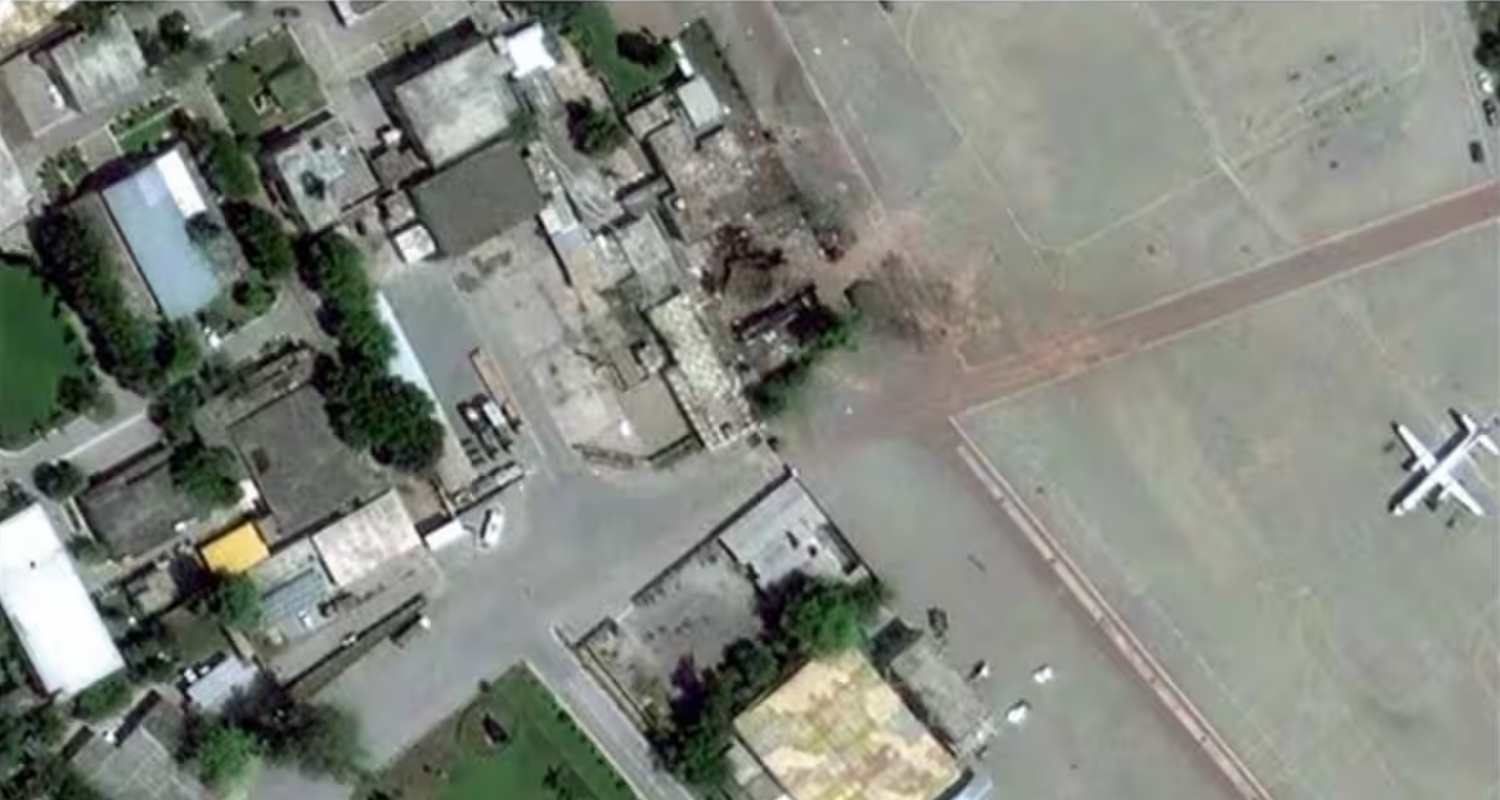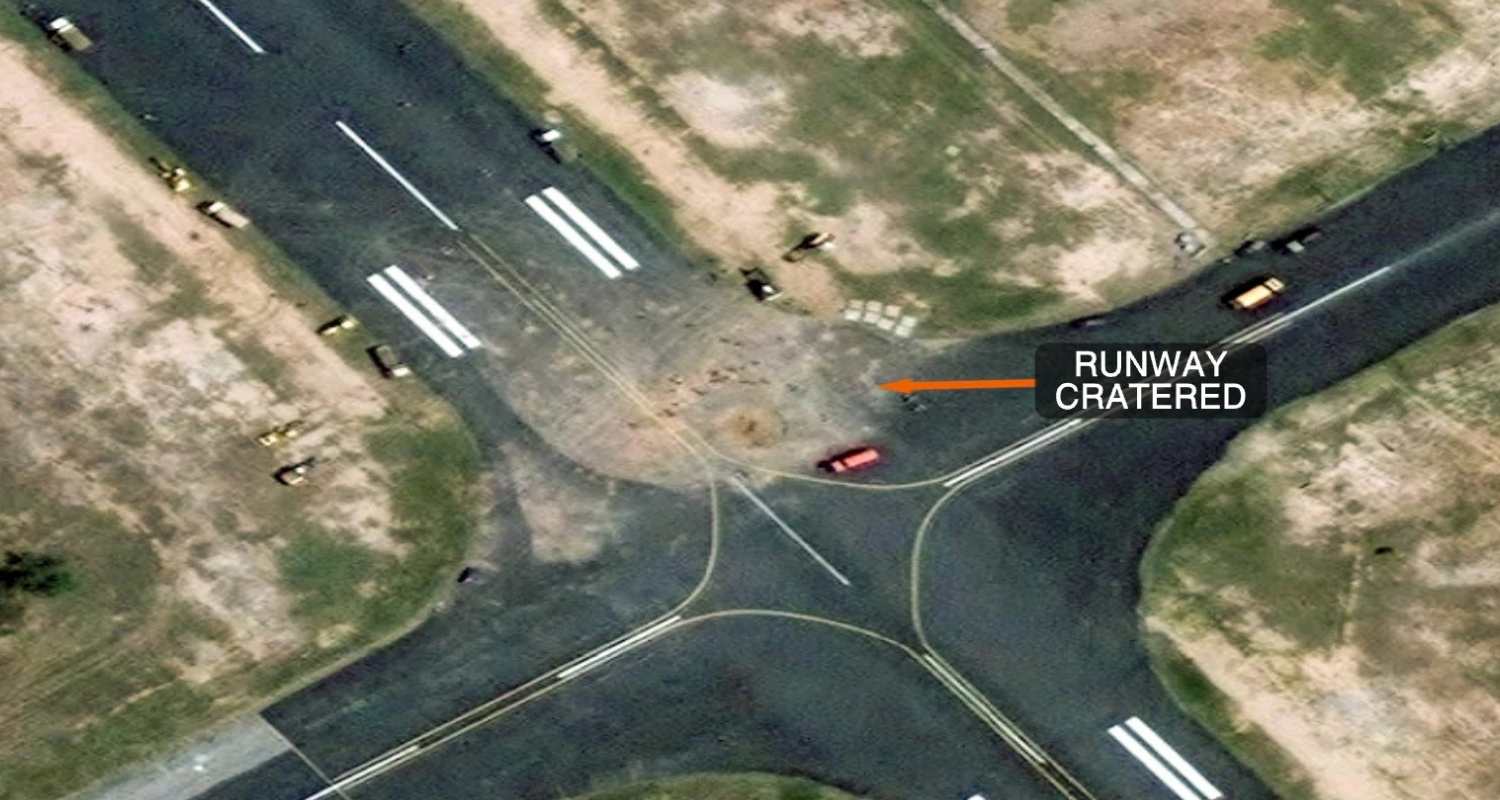Satellite imagery shows that Pakistan is rebuilding its Nur Khan airbase after India's Operation Sindoor strikes in May 2025. The attacks were a response to the terror attack in Pahalgam on April 22, which killed 26 civilians.
The Nur Khan Airbase, a crucial base for the Pakistan Air Force, is less than 25 kilometres from Islamabad. Logistics, surveillance, and operational coordination depend on the base, which is home to aircraft such as Saab Erieye airborne early warning systems, IL-78 mid-air refuelling planes, and C-130 transport planes.

India launched a missile attack on May 10 that was directed at a specific complex inside the airbase. Two special-purpose trucks that were probably used for drone asset command and control were destroyed in the strike. While the Indian government hasn't officially confirmed which missiles were used, it's highly probable the attack involved either BrahMos or SCALP air-launched land-attack missiles, or a combination of both. The BrahMos was launched from an Indian Air Force (IAF) Su-30 fighter, and the SCALP from a Rafale.
Pre-strike satellite images from before May 10 show the two tractor-trailer trucks with awnings on either side. An image from the day of the strike, May 10, 2025, confirms that both trucks were destroyed and that nearby buildings sustained heavy damage. By May 17, the site had been cleared of debris.
According to geo-intelligence experts, "Recent satellite imagery suggests Pakistan has begun rebuilding the target site India struck at Nur Khan Airbase in May 2025. The Indian operation targeted specialised military vehicles housed within a facility at the airfield, resulting in their destruction and causing collateral damage to adjacent buildings. In the aftermath, several of these surrounding structures were dismantled, likely due to compromised internal systems, wiring failures, or structural weakening."

A satellite image from September 3 shows new construction work, including the erection of new walls, at the strike site. The new construction closely follows the original architectural layout.
As per to geo-intelligence experts, "The current construction activity at the site reveals newly erected wall segments that are similar to the original building layout and prior architectural footprint. Given that this portion of the complex sustained only secondary damage during the strike, it is also possible that the rebuild is utilising pre-existing foundations that remained intact and structurally viable."
Also Read: New images show Chiefs of three forces monitoring Op Sindoor
Operation Sindoor: A Calibrated Response
Operation Sindoor, India's military response, involved a number of attacks on terrorist and military targets, some of which were deep within Pakistan. These attacks were launched after the April 22 Pahalgam terror attack, in which 26 civilians were killed.
According to reports, the Vice Chief of the Indian Air Force, Air Marshal Narmdeshwar Tiwari, revealed the timeline of the operation. The IAF provided the government with a list of operational options within two days of the terror attack. By April 29, specific targets were chosen and operational planning began. The armed forces finalised the date and time of the strikes on May 6.
On May 7, the Indian Air Force stepped up its attacks in response to counterattacks by Pakistani forces using drones and missiles, marking the start of India's response. The IAF's calibrated strikes penetrated as deep as 200 kilometres into Pakistani airspace, marking the deepest attacks since the war of 1971.
The targets included hangars for Pakistan Air Force aircraft, runways, enemy radars, and terror centres. According to reports, these attacks compelled the Pakistani government to accept a ceasefire on May 10.
Also Read: Satellite images show massive damage to Pak's Murid airbase



